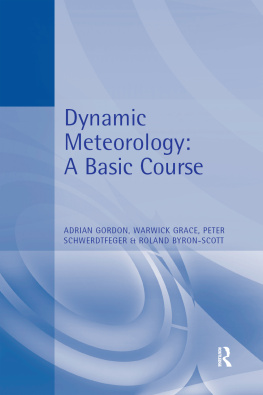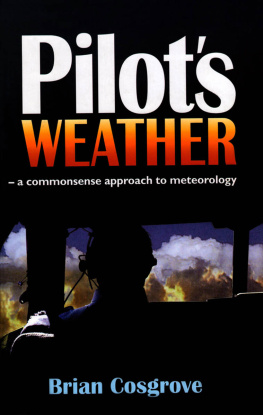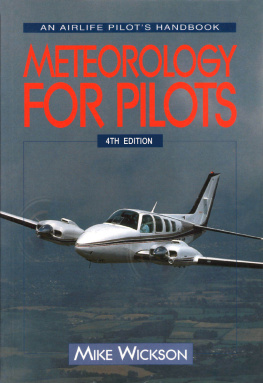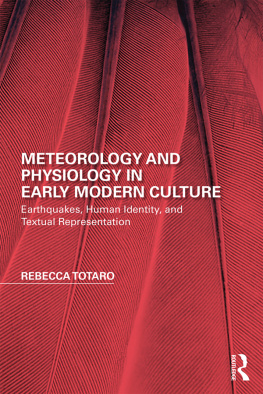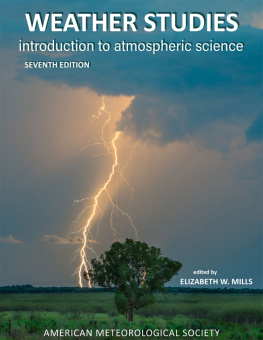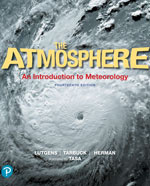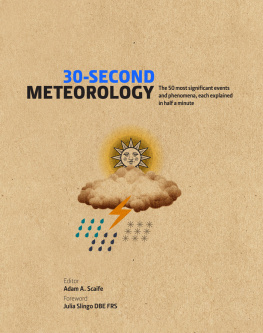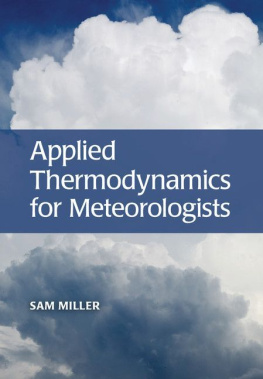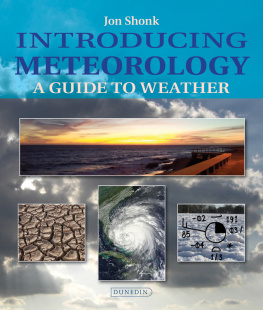
DYNAMIC METEOROLOGY: A BASIC COURSE
DYNAMIC METEOROLOGY: A BASIC COURSE
Adrian Gordon
School of Earth Sciences, Flinders University, South Australia
Warwick Grace
Bureau of Meteorology, Australia
Peter Schwerdtfeger
School of Earth Sciences, Flinders University, South Australia
Roland Byron-Scott
School of Earth Sciences, Flinders University, South Australia

First published 1998 by Hodder Education
Co-published in the United States of America by
Oxford University Press Inc.,
198 Madison Avenue, New York, NY10016
Published 2016 by Routledge
2 Park Square, Milton Park, Abingdon, Oxon OX14 4RN
711 Third Avenue, New York, NY 10017, USA
Routledge is an imprint of the Taylor & Francis Group, an informa business
1998 Adrian Gordon, Warwick Grace, Peter Schwerdtfeger and Roland Byron-Scott
All rights reserved. No part of this book may be reprinted or reproduced or utilised in any form or by any electronic, mechanical, or other means, now known or hereafter invented, including photocopying and recording, or in any information storage or retrieval system, without permission in writing from the publishers.
The advice and information in this book are believed to be true and accurate at the date of going to press, but neither the authors nor the publisher can accept any legal responsibility or liability for any errors or omissions.
Every effort has been made to trace and acknowledge the owners of copyright. The publishers will be glad to make suitable arrangements with any copyright holders whom it has not been possible to contact.
British Library Cataloguing in Publication Data
A catalogue entry for this book is available from the British Library
Library of Congress Cataloging-in-Publication Data
A catalog entry for this book is available from the Library of Congress
ISBN 13: 978-0-340-59503-9 (pbk)
Cover design: Terry Griffiths
Composition by Alden, Oxford
CONTENTS
In the first edition of this text Sir Graham Sutton, then Director General of the UK Meteorological Office and formerly Bashforth Professor of Mathematical Physics at the Royal Military College of Science, wrote in his foreword:
A course of study in science may take one of two shapes. It may spread horizontally rather than vertically, with greater attention to the security of the foundations than to the level attained, or it may be deliberately designed to reach the heights by the quickest route possible. The tradition of scientific education in this country has been in favour of the former method, and despite the need to produce technologists quickly, I am convinced that the traditional policy is still the sounder. Experience shows that the student who has received a thorough unhurried training in the fundamentals reaches the stage of productive or original work very little, if at all, behind the person who has been persuaded to specialize at a much earlier stage, and in later life there is little doubt who is the better educated.
Although I have always agreed with these comments I did not at the time fully appreciate the real importance of their meaning.
Some 20 years later I read the cult novel Zen and the Art of Motor-Cycle Maintenance by Robert Pirsig. This novel strongly influenced my thinking. In the preambles to my PhD thesis I included the following extract:
the only real learning results from hang-ups, where instead of expanding the branches you already know, you have to stop and drift laterally for a while until you come across something that allows you to expand the roots of what you already know.
Yet, I did not in any way relate, or connect, the latter quote with the ideas expressed so concisely by Sir Graham Sutton in the 1962 edition. In fact it was not until I reread the Foreword in the course of reconstructing the present text that I realized that Sir Graham was really talking about an aspect of lateral thinking, a concept often discussed in educational and research circles today.
The authors hope, and believe, that the tradition pioneered by Sir Graham has been carried on in this newly constructed text, comprising three fundamental courses in meteorology which have been taught to undergraduate students by the authors in dynamic, synoptic and radiation meteorology. The authors are all internationally known in their individual fields. Not only is this author diversity unusual in a book of this level, but diversity in content emphasizes the importance of the contrast in motions between the southern and northern hemispheres as determined by the differing sign of the angular velocity of rotation of the planet relative to the observer.
I hope that this text will serve its purpose well.
Adrian Gordon
The authors acknowledge the staff at the Bureau of Meteorology in Australia, especially Frank Woodcock, Noel Davidson (both for critical comments), Andrew Hollis for library assistance and Susan Wong for some word processing. Thanks also to Judy Laing for some diagram work and to Mark Bedson of Ceduna in South Australia for the cloud photos.
During the first part of the present century the term meteorology really meant the study of all aspects of the atmosphere. But it tended to emphasize the weather in all its variety of manifestations: the simple and the extreme, the sunny days we all enjoy, the more extreme conditions we bear and suffer and swear at. The study was particularly concerned with weather maps, or synoptic charts as they are referred to by those who prepare and analyse them, and to forecasting the weather using the weather map as a practical tool. The classic text in the early days of the century was Sir Napier Shaws four-volume masterpiece Manual of Meteorology, followed in the 1930s by Sir David Brunts Physical and Dynamic Meteorology. Even in those comparatively early days the role of mathematics was indispensable. Yet, it often seemed most difficult to follow the equations. Meteorology was only taught at a few universities Imperial College in London, MIT (Massachusetts Institute of Technology) in the USA in the English-speaking world, but it was also advancing rapidly in Scandinavia and other European countries. It was mainly taught as a postgraduate specialist course leading to Master and PhD degrees.
In the middle 1930s, in a time of recession and depression, meteorology received a big boost. This was due to the demands of the rapidly expanding airline industry, particularly in the USA. Jobs were offered to qualified meteorologists to prepare flight weather forecasts for airline operations. A few years later the outbreak of World War II intensified the demand for weather forecasters. Training courses were established and filled by those who only had a rudimentary background of mathematics and physical science. During the latter half of this century the term meteorology tended to be displaced by the more erudite term atmospheric physics or atmospheric science. This transformation was in part due to a certain elitism that meteorology was too much concerned with weather maps and weather forecasting which, before the days of numerical prediction models, were thought by mathematicians and physicists to be a kind of technical trade beneath their professional abilities. But in this work we will not show disrespect to the original term, which is still useful when we wish to subdivide the subject into more specialized fields of interest.
Next page
